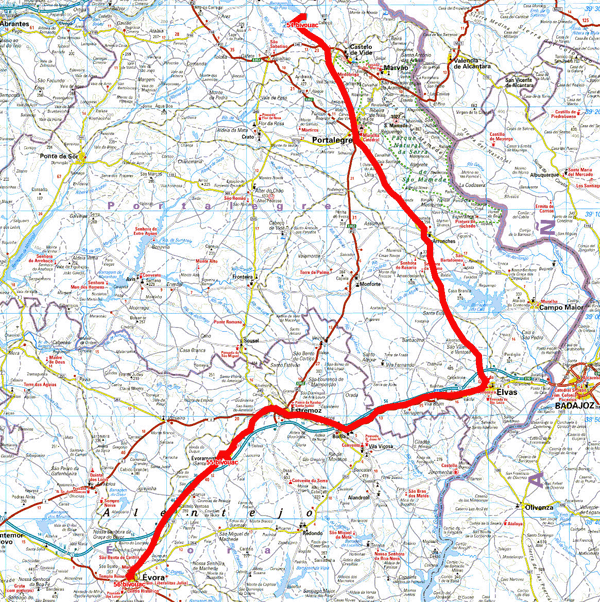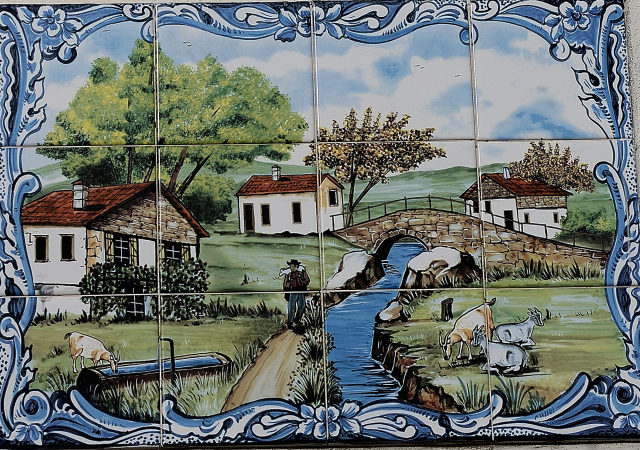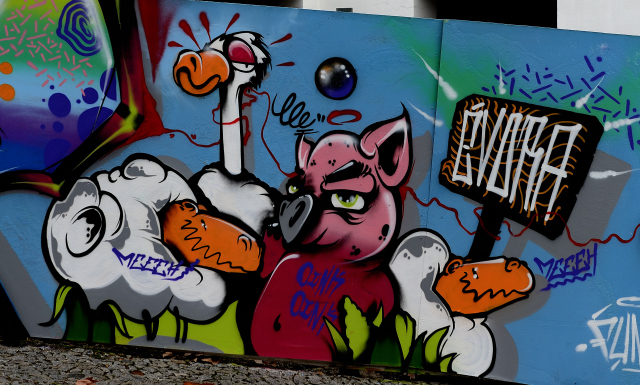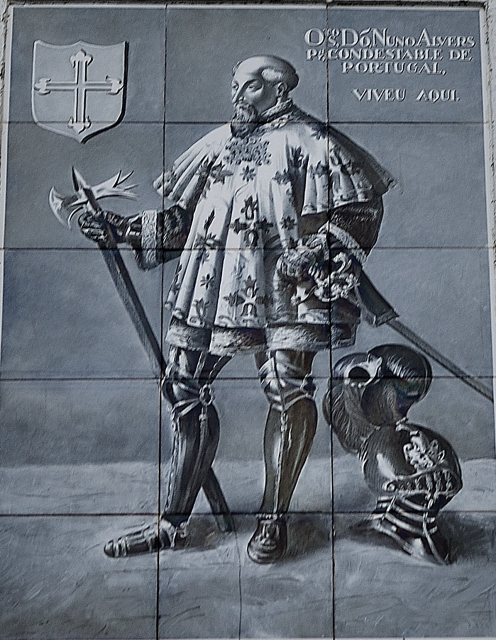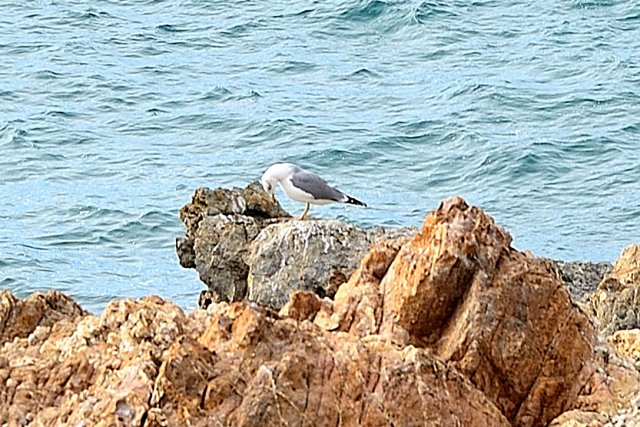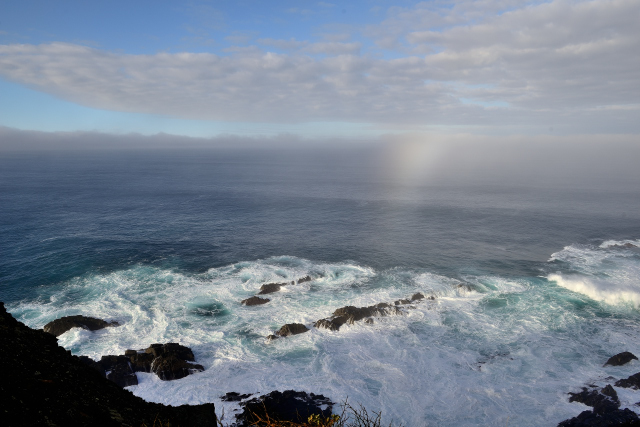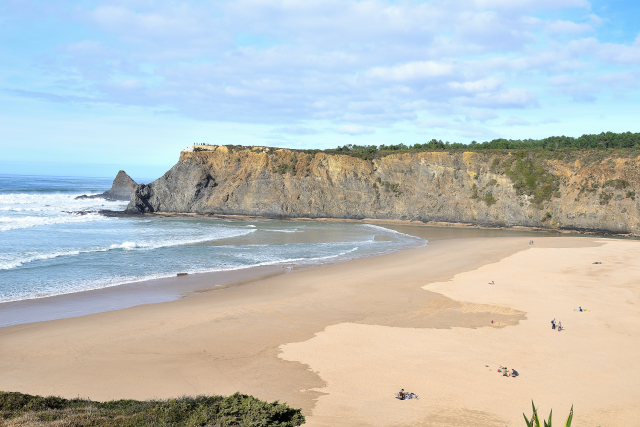Évoramonte
On Tuesday, December 26 by leaving the artificial lake of Póvoa my
first stop was in Elvas, registered with the inheritance of
UNESCO in 2013 as fortified town surrounded by ramparts and
occupied by the Moors in 1226. The historical center around Praça da
República draws attention by Sé, cathedral Gothic of origin but
rebuilt in manuelin style, by Lago de Santa Clara with in its center
the pilori of the 16th century, and by the castelo built by the
Moors. In this day of December 26th all monuments were closed.
At the exit of the city I went along the impressing Aqueduto da
Amoreira builds from 1498 to 1622. it marries the escarpments of the
hills on 7.5 kilometers. It always feeds the city out of water. I
continued my way up to Évoramonte whose castelo on a hill dominates
the plain neighborhood with its enormous keep. I bivouacked at the
bottom of castle.
Elvas & Évoramonte, click on the pic for opening the gallery
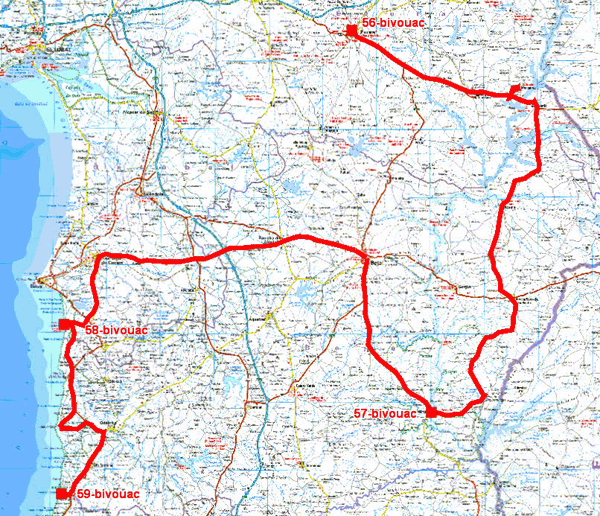
The GPS road tacklog
from Evora to Odeceixe
from 2017/12/28 au 2017/12/30
Evora
Wednesday, December 27 was dedicated to the visit of Evora
registered with the world heritage of UNESCO,
here.
Weather was not favorable, a drizzle fell quasi permanently making the trip
painful and wet. Consequently I shortened by limiting me to the most
significant monuments of this city conquered by the Moors into 715
after having been Roman then wisigothe and finally reconquered by
the Christians in 1165. Unquestionably it keeps the traces of these
various times, witnesses Templo Romano as well as wall vestiges here
and there. At a turning of a street Caixa de Agua attests water
supply by an aqueduct built in the 16th century. It is rich in
churches and convents of all the religious orders as well monks as
nuns. The cathedral is the most significant part of piety at the
medieval time, by its two powerful notched towers, its Gothic
cloister and its nave arched in cradle in which figure a parturient
Virgin facing the archangel Gabriel as well as an organ of 1562
considered as the oldest in Europe. From the treasure of the museum
I retained more particularly, a Deposition by Gregorio Lopes, the reliquary of
the true cross and a opening Virgin out of ivory finely engraved. In
advance under the drizzle I reached the Largo da Porta de Moura
where is a Renaissance fountain on bottom of the towers of the
cathedral as well as the elegant Moorish loggia. While curving the
spine I returned to my vehicle to put to me at the shelter. I
bivouacked on the spot.
Evora, click on the pic for opening the gallery
Mértola
Thursday, December 28 was still a day of rain and fog. I went
along the Spanish border which is constellated with castelos on
Portuguese side to defend the independence of the kingdom after the
reconquest of the territory on the Moors. Of course I did not visit
all of them me concentrating on the most significant, Monsaraz and Mértola.
Monsaraz was in the fog at 9:00 am. It is animated with
mannequins representing the villagers in activity. Mértola is
built at the edge of a river whose castelo is in the state of ruin
except the restored keep. Wishing to go up to the castle I followed
the road signs to find me in a very narrow street and finally in a
turn on the right which required more than ten before-back operation
to negotiate it, I believed not to be able to leave there without
damage my truck. But I passed, phew! Once again I went up on foot
to the castle. I bivouacked on a carpark outside the village.
Monsaraz & Mértola, click on the pic for opening the gallery
Porto Covo
On Friday, December 29 I spent the morning to visit the town of Beja
and more particularly Antigo Convento da Conceicão which shelters
Museu da Rainha D. Leonor, then Igreja de Santo Amaro which gathers
the sculptural art of the wisigothic time. But while arriving at
Beja the fog still recovered the city consequently I settled in a
coffee for a complement of breakfast before my cultural trip. The
convent of the clarisses was founded in 1459. The baroque vault was
decorated at the 17th and 18th century with profusion of gilded wood
as well as azulejos for the cloister. The highlight is
the chapter house richly decorated with paintings and azulejos. In
the adjacent rooms I retained the exceptional Ecce Homo by Portuguese
school in the 15th century. Igreja de Santo Amaro is of wisigothic
origin in the 6th century, it is used as museum of the eponymous art
whose certain parts testify to the re-employment at the time of the
occupation by the Moors. In extreme end of the morning I moved towards
the ocean to bivouac in Porto Covo on the sea front.
Beja, click on the pic for opening the gallery
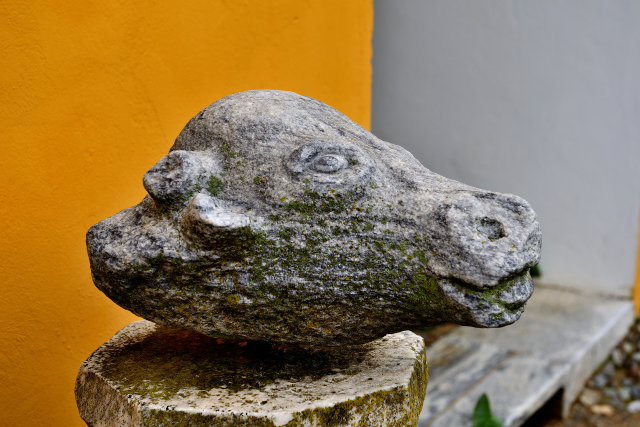
|
| Gargouille, Gargoyle |
Odeceixe
On Saturday, December 30 the sun did not heat the atmosphere before
11:00 am. The fog stationed on the landscape
as well as on the Atlantic coast when I passed at
Cabo Sardão. On the other hand on my arrival at
Odeceixe the sky was blue and the resplendent beach. I bivouacked on
a carpark overlooking the bay.
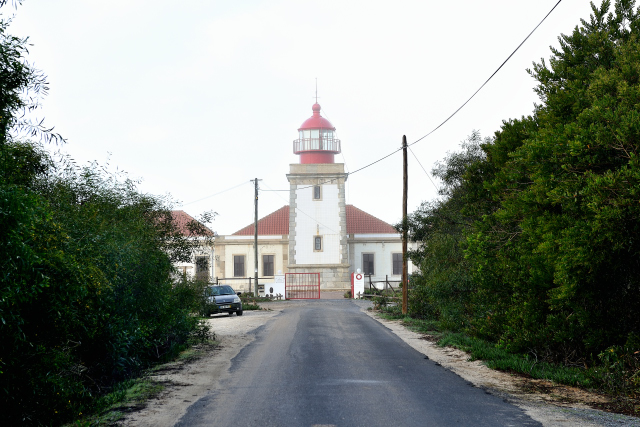
|
| Cabo de Sardão |
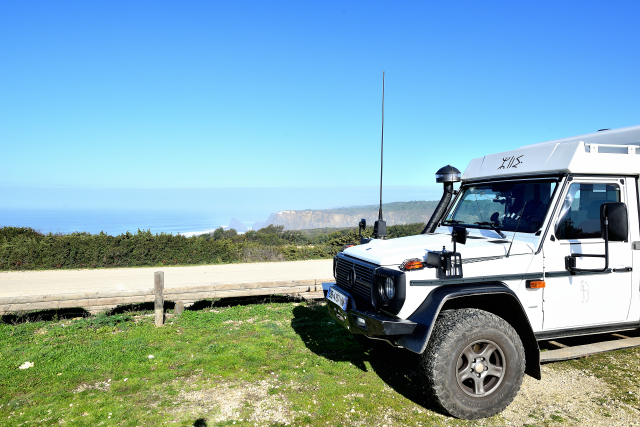
|
| Bivouac Odeceixe |

The GPS road tacklog
from Odeceixe to Barragem do Arade
from 2017/12/31 au 2018/01/01
Barragem do Arade
On Sunday morning, last day of the year 2017, I traversed in the
fog the south-western coast of Portugal, Algarve. As I expected it
parking lots for motor homes were crammed mainly by Portuguese
but also by German and Scandinavian, Dutch and Swedish. After a
short stop in Lagos to visit Igreja de Santo António, No Photo, to
admire decoration as well as the ceiling misleads of it the eye, I
continued my way towards Barragem do Arade where I thought of
finding a bivouac peaceful for two days. Que nenni I arrived on a
rather exiguous spot occupied by a German colony in line on the
circumference and in square at the center for the emblematic “Stammtisch”
gathering the members around, of course, beer. I did not
have any more another choice, I stayed.
Algarve, click on the pic for opening the gallery
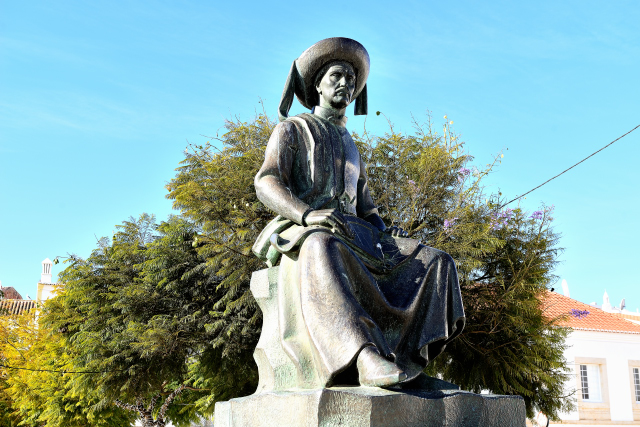
|
| Infante D. Henrique |
